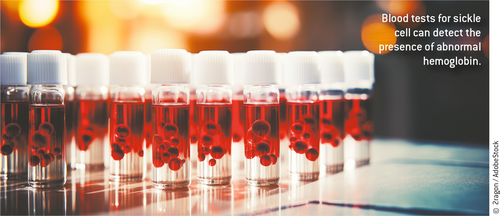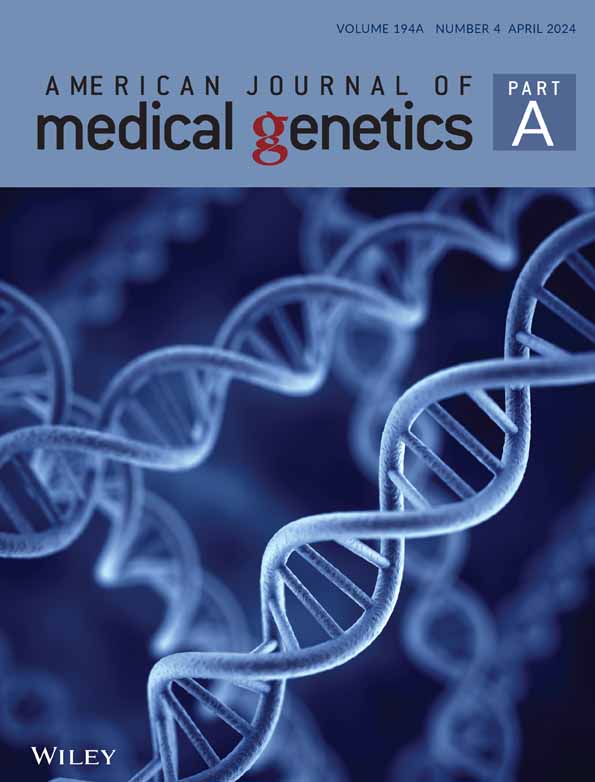First Gene Therapies Approved for Sickle Cell Disease
New groundbreaking treatments for this chronic blood disorder are potentially curative
Sickle cell disease (SCD) is an umbrella term used to refer to a collection of hemoglobinopathies that are characterized by the presence of 2 β-globin gene variants or deletions, at least one of which is the point “mutation” that leads to the production of hemoglobin S. The prevalence of this multisystem disorder is high among the peoples of sub-Saharan Africa, South Asia, the Middle East, and the Mediterranean. Approximately 100,000 people in the U.S. have SCD, and the disorder primarily affects the Black or African American population (Sedrak and Kondamudi, 2024).
Sickle cell disease is characterized by intermittent vaso-occlusive events and chronic hemolytic anemia. The vaso-occlusive events result in tissue ischemia, leading to acute and chronic pain as well as organ damage that can affect any organ system. Pain crises constitute one of the most distinguishing clinical features of sickle cell disease and are the leading cause of emergency department visits and hospitalizations for affected patients.
Currently, treatment options for SCD focus on managing symptoms and preventing complications. This includes pain management with analgesics; hydration; and blood transfusions to improve oxygen delivery. Hydroxyurea, a medication that increases the production of fetal hemoglobin, is commonly used to reduce the frequency and severity of pain crises. Several new medications have been approved in the past few years, but the only treatment that is potentially curative is bone marrow or stem cell transplantation, which is reserved for individuals with severe SCD who meet specific criteria.
Gene Therapies for Sickle Cell
Casgevy (exagamglogene autotemcel or exa-cel), developed by Vertex Pharmaceuticals and CRISPR Therapeutics, is the first FDA-approved treatment to use the gene-editing tool CRISPR/Cas9. This tool can be directed to cut DNA in targeted areas, which allows for editing. In this case, the modified blood stem cells are then transplanted back into the patient to engraft within the bone marrow and increase the production of fetal hemoglobin (HbF). Increased levels of HbF prevent the sickling of red blood cells in patients with SCD.
The safety and effectiveness of Casgevy were evaluated in an ongoing single-arm, multicenter trial in adult and adolescent patients affected by SCD and severe occlusive events. Of the 31 patients in the study, 29 (93.5%) remained event-free for at least 12 consecutive months (U.S. Food & Drug Administration, 2023).
Bill Hobbs, MD, PhD, Vice President of Clinical Development at Vertex, discusses the care that was taken in developing Casgevy. “As a physician, I am excited that people with sickle cell disease now have multiple, one-time therapeutic options to consider and discuss with their doctor,” he comments. “Safety will always be an important part of those conversations, and it is our top priority in developing new therapies. We went through an extensive pre-clinical and clinical trial program to evaluate Casgevy and to ensure that that the risk/benefit associated with the therapy was both well characterized and appropriate.”
Lyfgenia (lovotibeglogene autotemcel or lovo-cel), developed by Bluebird Bio, is a cell-based gene therapy that uses a lentiviral vector for genetic modification. Lyfgenia causes genetic modification of the patient’s blood stem cells to produce HbAT87Q, a gene therapy-derived hemoglobin that functions similarly to hemoglobin A, which is the normal adult hemoglobin found in individuals without SCD. Red blood cells containing HbAT87Q carry less risk of sickling and occluding blood flow. The safety and effectiveness of Lyfgenia is based on results from a single-arm, 24-month study conducted with a cohort with SCD and a history of occlusive events. Results showed that between 6 and 18 months following infusion with Lyfgenia, 28 of 32 patients (88%) achieved complete resolution of these events during this period (U.S. Food & Drug Administration, 2023).
Both Casgevy and Lyfgenia are indicated for patients 12 years and older with recurrent vaso-occlusive crises, and Casgevy is also approved for transfusion-dependent ß-thalassemia.
Both treatments have the potential to be a cure, notes Lewis Hsu, MD, PhD, Chief Medical Officer at the Sickle Cell Disease Association of America and director of the pediatric sickle cell program at the University of Illinois at Chicago. He cautions, however, that the data is still very young. “The FDA has asked for 15 years of follow-up for patients to evaluate efficacy and toxicity,” he points out.
Alexis A. Thompson, MD, MPH, Chief of the Division of Hematology at Children’s Hospital of Philadelphia, agrees. “Broadly speaking, this is an extraordinary accomplishment,” she says. “It is likely transformational and may offer definitive therapy for those with shortened lifespans.”
Currently, it is too early to speculate as to whether these treatments are curative. “What we can say very confidently is that they seem to be safe and durable, but we need more time and [to see] more individuals treated,” Dr. Thompson says.
Treatment Challenges
While these two new gene therapies are certainly transformational and potentially life changing, their uptake will likely be slow, for numerous reasons. “There are about 20,000 people in the U.S. with sickle cell disease who meet the FDA criteria, but not all of them are going to want gene therapy or will have access to it,” says Dr. Hsu. “It’s not going to make a difference for the approximately 15 million people with SCD living in sub-Saharan Africa.” Moreover, many physicians and patients will undoubtedly be hesitant until long-term efficacy and safety are better defined.
“Patients all have different opinions,” said Dr. Hsu. “There are those who say, ‘Now that it’s here and approved, sign me up,’ and are willing to do everything to get to it. Others say that when they were very ill in ICU they would have been willing to take anything, but 4 months later, it’s different; they are doing well and want to wait, as the imminent danger isn’t there.”
Both therapies require patients to undergo hematopoietic stem cell mobilization followed by apheresis to obtain CD34+ cells for manufacturing the product. Patients must also undergo full myeloablative conditioning prior to the infusion. The whole procedure can take up to a year and is similar to autologous bone marrow transplantation, as there is no need to find a donor of stem cells. It also requires a hospital stay of weeks or even months, and the chemotherapy used in the preparatory steps can cause serious side effects, including severe infections, nausea, painful mouth sores, and infertility. Thus, there are patients who are doing well enough and would prefer to avoid the discomfort and other challenges involved with treatment.
Delivering gene therapy also requires medical centers that are highly specialized, which are frequently academic institutions in urban areas. “[The treatment] needs to be carried out in centers that have the capabilities for this, even if it does cause some barriers to access,” Dr. Thompson explains. “We want the best outcomes, and this has to be recognized.”
Finally, the cost of the treatment is formidable. Casgevy comes with a price tag of $2.2 million, while Lyfgenia is priced at $3.1 million.; however, Dr. Thompson does not regard this as unusual. “Current manufacturing techniques are quite elaborate, as is the cost of clinical trials,” she says. “Right now, we want to make the treatment safe and effective, and over time, improvements in technology will make it less expensive.”





